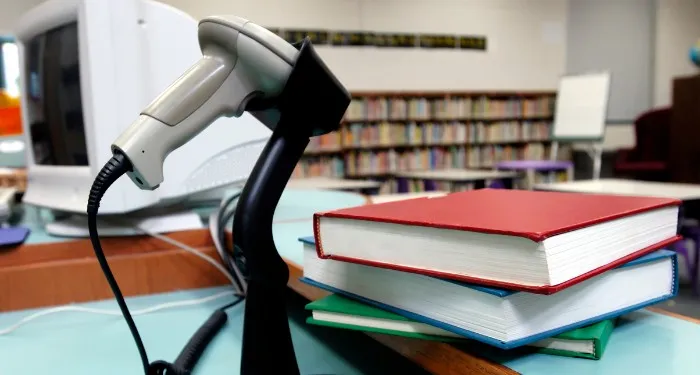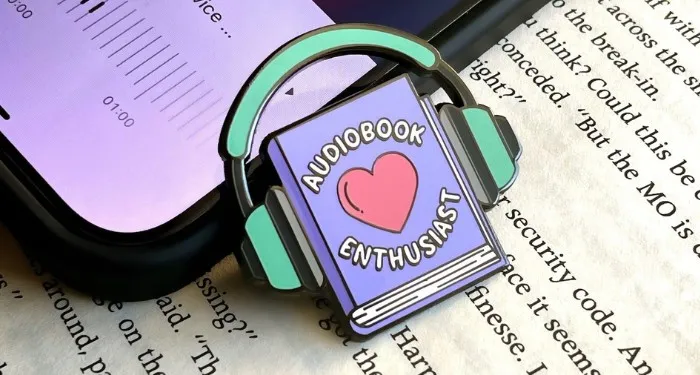Since they replaced the diseased portion of my aorta with a knitted Dacron polyester graft, I hear my heartbeat if I turn my head; I feel a pounding in my chest whenever I inhale deeply; I feel new pulses in new locations with new intensity. (The Dacron graft is less dampening than your aortic tissue: natural aortic walls absorb and cushion some of the pulsatile force; Dacron reflects it. This makes the pulse pressure wave travel differently and can amplify heart sounds, such as valve closures.)
Familiar metaphors become literal: when, in the process of repairing an aneurysm at your aortic root, a surgeon touches your heart, you are at risk of developing postcardiac depression, also known as the “cardiac blues.” They don’t know why this is, but it’s in the literature.
I entered the literature when they touched my heart and changed the prosody of my body, and now I must await postoperative heartbreak. Because of the dark and the drugs, I couldn’t, at first, tell the nurses apart, so they became one nurse with changeable tattoos on her muscular arms: octopus, pagoda, fern. The forms flickered and morphed as I watched; the tattoos were trying to tell me a story—like in that animated musical, where the inked figures act out scenes on the broad chest of the demigod. What was it called? Perioperative memory loss.
You’d placed my phone on one of those plate chargers near the window so I could talk to it. I’d forgotten that our daughter, before the surgery, had set the AI voice to Santa Claus. So: “Ho, ho, ho, you’re thinking of Moana.” And when I asked it about the altered acoustics of my body, Santa got very quiet, a kind of “’Twas the night before Christmas” whisper: “My friend, the Dacron graft is less dampening than your aortic tissue…”
This is a test of how changes in my pulse pressure waves have altered my sentence rhythms. If I can bring those new rhythms into right relation with the experience I’m trying to describe—if I can make what I think of as my Dacron sentences capture something of those hospital nights—then maybe I’ll have made progress toward integrating the experience, toward making it shareable, and maybe this will rob it of some of its traumatic force, and help me prevent, or at least work through, the cardiac blues, which I feel coming, which I hear approaching at the time of writing on the hooves of my new heartbeats. I am late in week two of recovery.
I’m surprised to find that, despite my vanguard pieties, I do think of writing as therapy. I think of it as cardiac rehab.
There is a central venous catheter in my neck. Two larger chest tubes protrude from below my sternum, draining air, blood, but also a straw-colored liquid from the spaces between my lungs. It drains into a clear plastic box on the floor. There are fine stainless steel pacer wires that rest on the surface of my heart and exit my body somewhere beneath the sternotomy incision. I can’t see these; I think they’re taped to my skin; I think they pick up, in addition to cosmic background radiation, small waves in the ether formed by the heart sounds of fellow patients in nearby rooms. (All the rooms in the cardiac unit, which is on the fourteenth floor, are private.) There is an arterial line in my wrist, various peripheral IV lines in my hands. I am being given vasopressors for low blood pressure and insulin for high blood sugar and who knows what other liquids for what other purposes. I am probably receiving “blood products,” a phrase impossible to unhear. A Foley catheter draws my urine into another clear box on the floor.
Despite the neck tube, I can turn my head to the left. But when I turn it, when my cheek comes to rest on the pillow, my consciousness remains where it was. My grammar can’t hold it, how I’m still staring at the ceiling while my face is turned toward the window, toward the cot on which you sleep outside the literature.
You slept surprisingly well beside the window, despite all the beeping, the coming and going. A deep and necessary and protective sleep because of all the terror you’d been carrying, all the work you’d been doing to support us. You know what happened during the days but I’m working through a long postsurgical night. You know who you are but at the same time I want you, the you, to expand: I want the pronoun to have a relaxation phase (diastole), where anyone can be on the cot, look out the window that opens onto the East River. The continuous cycle of pronominal expansion and contraction is the heart of writing for me, it is the time of writing, the filling and emptying of the chambers of the art. As are its arrhythmias.
I feel permitted to use these metaphors and say these unoriginal things anew because they sawed open my chest and stopped my heart and changed the prosody of my body. And I’m hardly alone; I have joined a community: each year they do this—at least the sawing and the stopping part—to more than two million people, which is about the population of the heart of Paris. I picture a Paris where everyone within the city limits has had open-heart surgery, an open city. I am in the hospital bed facing left but staring at the ceiling hitting the little button that gives me narcotics and imagining that even the Parisian birds and mice and squirrels have had their hearts stopped with a cold potassium solution so that surgeons, who have themselves only recently had their ribs pried apart, can do their delicate work in a still and bloodless field.
The intense emotional lability that immediately follows the procedure is not to be confused with the cardiac blues, which are a duller, deeper, postpartum-like despair. That first night, while (the) you slept, the composite nurse helped feed me ice chips and Jell-O with a plastic spoon. I wept and wept and laughed at my weeping, which caused excruciating pain—try not to cough, laugh, or sneeze in the first days following your sternotomy. I cannot tell you how delicious it was—orange Jell-O, ice pellets, tear salt, the height of Parisian cuisine; I cannot tell you how I loved the nurse who spoon-fed me so gently in the dark.
But then she vanished; I heard running in the hall, where a blue light was flashing. Code blue, cacophony, but also muffled somehow—hushed voices, soft thud of sneakers, rustling of scrubs, the squeak of a crash cart—as if the rapid emergency response already contained an element of mourning. I managed to reach the Styrofoam cup and drink a little of the ice melt on my own, just a little, as I’d gained twelve pounds from fluid already and couldn’t recognize my hands for the edema. I imagined a blue arc extending from my pacer wires to those of the person whose heart had stopped.
Unconscious during the insertion of the major tubes and wires, I was awake for their removal. (Actually, I wasn’t awake for the removal of the endotracheal tube, which happened when I was still in the operating room, and I have only a fading dreamlike recollection of their pulling out the nasogastric tube, as I’d barely begun to surface from the anesthesia; my eyes were closed. But still I recall something akin to that trick where clowns or magicians produce endless silk scarves from a pocket or sleeve; the NG tube is four feet long.) I remember the other removals as happening while you slept, although that’s wrong—only the tube in my jugular came out in the literal dark. I probably remember it that way because you weren’t there; I insisted you leave the room; I didn’t want you to witness my decannulations; I’ll write it all down for you later, I promised in my head. My only defense against reality: to transform it into literature.
Each removal constituted progress, a step down in the intensity of care, a step toward the restoration of the human, but I was terrified of the extractions, having read a hundred posts on Reddit claiming that the removal of the tubes was the most traumatic part of the entire “controlled trauma” of valve-sparing aortic root replacement.
Bless the nurse (by this point the nurses began to individuate) who removed the line from my neck—bless her for the clarity of her speech and the decisiveness of her movements. I recall her voice and touch vividly, though I never really saw her face. She adjusted my mechanical bed so that I was in a mild version of what is called the Trendelenburg position, meaning my head was slightly lower than my chest. She established a sterile field around the line and deftly removed the tape and cut the little stitches that held the device in place. And then she told me that I could either take a deep breath and hold it or begin to hum.
Hum? Yes, she said, hum. It hurt to breathe deeply, to hold my breath, but the idea of humming embarrassed me, as if she’d suggested I might sing. Would you like me to hum with you? she asked. Why don’t we hum together, she said. (Bless all medical practitioners who close, however briefly, the divide between the healthy and the sick, subject and object, who don’t look down at your broken body in the Trendelenburg position but instead draw alongside you in your suffering.) Yes, please, I said. And she began humming and I joined her in this proto-speech, this proto-song, and this increased my venous pressure and closed my vocal cords so as to prevent an air embolism as she pulled in one perfectly smooth gesture seven inches of tubing from my jugular. Then she held gauze over the exit site for several minutes. (I was on blood thinners.) You have been a great comfort to me, I kept repeating.
I think many hours must have passed, maybe a day or more had passed, before a young resident arrived, along with a supervising fellow, to remove my chest tubes, but I remember all the extractions as taking place one after the other. I recall that the supervising fellow told me that I might want to dispense some narcotics with my little clicker before “the big event.” I don’t remember their faces; I remember almost none of my caretakers’ faces, not only because of shock and drugs, but also because my vision was disturbed by migraine-like distortions during the entire hospitalization—scotomata and scintillating floating jagged forms (the latter even when my eyes were closed). They said this could be attributed to any number of factors: inflammation, medication, cardiopulmonary dynamics, intracranial pressure shifts, etc. These symptoms didn’t particularly interest them; they considered them irrelevant from a cardiac perspective, since they decided I probably wasn’t having strokes. Also, I wasn’t wearing my glasses.
The young resident seemed competent to me, steady-handed as she removed the dressing and cut the stay sutures around the tubes, but she was learning, I was being learned upon, spoken about instead of to, all of her speech was addressed to her supervisor, and as a result I felt thingly under her touch, reduced to my material. I tried not to think of the anatomy lessons of Rembrandt and Eakins, all those students grouped around a livid corpse. (My visual memory—usually poor—was eidetic in the hospital.) The only thing she said to me directly was: OK, on the count of three, hold your breath or hum. I held my breath.
It isn’t the pain that I need to describe for you; there was little pain. It is how I suddenly became aware of a space—the pleural space—inside my body that I did not previously know existed, that hadn’t existed until they pulled something out of it. It’s how I could feel the tube moving along the tissue, a shifting deep in my thorax where I previously had no sensory awareness at all, where I was never meant to have sensation, my interior becoming wrongly tangible. And it was as if only now, when the tube was being extracted, I experienced the violation of its insertion, and so these events transpired in the wrong order, or in no order, happening simultaneously; the extraction made present what I could not remember. One moment you’re in the OR, the next moment you’re in recovery, but the tubes and wires run between those experiences, and when they pull them, they tug some of the controlled trauma into consciousness.
“Was never meant,” “wrongly,” “the violation”—these are the things you must talk back to, these are the moments when you have to say to your body, to say aloud in your mechanical bed, or two weeks later at your writing desk: What seems to be mere violence, violation, is care, they are helping me; as hard as it is to believe, this is good for me. As they put some kind of liquid tissue sealant into my exit wounds, I repeated my mantras about care and gratitude, these good clichés I thought of as my spells, as sealants that might keep my newly hollow spaces from being filled with blues.
Finally, the pacer wires. The nurse who came for them was the only caretaker I encountered who was significantly older than I am, probably in her late sixties. She smelled like aloe and laundry detergent. She was the only one who made small talk: this weather, this rain, hope my basement doesn’t flood. I tried to imagine having a body in rain, but could not. As she removed the tape and cleaned the tips of the wires where they protruded near my lower sternum, I asked her what kind of pain I should expect. I’d been told the wires were “gently tacked” to the outermost layer of my heart wall. She said that patients rarely reported pain. (Since we weren’t in Paris, the nurses and doctors had no relevant first-person experience.) What people report, the nurse explained, is that it feels like mice scurrying in their chest. Wait, more than one patient has said this thing about mice? I asked. Yes, she said. A lot of people have told me that.
How was it, I wondered, that multiple patients had used such a specific analogy? And why would the extraction of these four thin wires resemble the scurry of little rodent feet? I didn’t believe her, and it bothered me that she would lie. I assumed that only one patient had ever mentioned mice, but that she’d been struck by the description. Again, I was given the option of humming or holding my breath and I held my breath as she began to pull the metal wires from me one by one.
It felt like mice scurrying in my chest. Patter on my heart, then tiny feet racing across various zones of fat and tissue until they vanished through the exit site. It was not a single smooth motion, there was starting and stopping because the wires, which have tiny ridges, sometimes stick in tissue before they’re then pulled free. This intermittence felt distinctly, bizarrely animate—the mice hiding, maybe pausing to nibble something, then making a run for it. Or lab mice who were trying to figure out how to exit the maze of my torso, hesitating here and there to sniff the air.
Maybe if the nurse had reported another metaphor, I wouldn’t have experienced the mice. But I did feel them, they touched my heart, and I will never forget them. That they had been there waiting, sleeping in a heap on my epicardium, the youngest burrowed into the center of the group for warmth, their own tiny hearts, so similar in structure to ours, beating more than five hundred times a minute.
Now there is a mouse-size monitor taped above my heart because it has been skipping beats. Its electrical signals are constantly tracked, and if I suffer any dangerous arrhythmias my cardiologist will receive a call, will call me, and I’ll return to the hospital. And as I write about the extractions, as I choose what to include or leave out or alter, I feel my heart rate increase, grow irregular—but it’s hard to tell when skips are real or only imagined, especially given the changes wrought on my body’s soundscape by the graft. It is also possible that anxiously anticipating skips induces them. They are monitoring my heart’s rhythmic fluctuations as I write this sentence about my heart’s rhythmic fluctuations.
Long before I’d had any tests, I thought of both sentence and line as electrocardiograms, as measures of the writing body’s idiosyncratic pulses, which might quicken in the act of composition. I harbored the fantasy that once encoded in literary form the synchronic rhythms of my heartbeat and my breath might become available to you, and that your own rhythms might be altered by the encounter in the time of reading. Literal conspiracy, literal concord, blue arc between us. I’m wondering if this can help me now.
That Monday we left the house at 4:00 AM by Lyft; the girls were staying with friends upstate; by 5:30 I’d been checked in and was pacing the waiting room, repeating, This is good for me; soon I was taken to a pre-op room, where I was instructed to take off and bag my clothes and clean my body with antiseptic wipes, which left dark orange streaks on my skin; a nurse affixed a large adhesive pad to my lower back, which she said had something to do with an electrocautery machine, about which I didn’t ask; then they let you join me in the pre-op room; they put in my IVs; the anesthesiologist came in to introduce himself and had me sign a lot of papers I didn’t read; eventually my renowned blue-eyed surgeon appeared—not yet in scrubs—to ask how we were doing; I told him I was scared; Of course you’re scared, he said; he told me he had read the part of my novel written a decade before in which the narrator imagines aortic dissection as the aorta detaching from the heart like a garden hose and spraying blood; That was funny, he said, but not accurate; that wasn’t going to happen today; he would see me soon, on the other side, and he rose and shook my hand; after I don’t know how long, a nurse appeared and said she was ready to wheel me in; I asked if I could walk (if you see an opportunity for agency, take it); I was surprised my legs held; you and I embraced and we exchanged private speech and I gave you my glasses and walked with the nurse out of the room and through the specially marked doors until we arrived at the OR, the surgical theater; when I entered the theater, a male voice announced, Patient walking in, which made me think of “dead man walking”; the theater was vast and very cold; loud music was playing; it sounded like the Police but was not the Police; I remember the insane thought that the music might be live; there were far more masked and gowned people than I expected, doing mysterious prep work at various stations; somewhere I knew there was a bovine heart valve in case mine couldn’t be spared; the anesthesiologist met me and led me to the elaborate surgical table; Any particular requests while we get ready? (he meant music); I ignored the question and said, If I don’t make it please tell my family I love them; please give me the drugs right away; he told me where to rest my head on the table and as I looked up at the bright lights and ceiling-mounted booms I began to say again that I would really like the drugs, but early in the sentence I realized I was suffused with warmth, and the pronouns gave way, no I left at all. (My blue-eyed surgeon and his team opened me up, placed me on bypass, arrested my heart, cut away my diseased aortic root but preserved my native valve, which they sewed into the Dacron graft, from which my coronary arteries must now branch, the graft was joined to my ascending aorta, they restarted my heart, put in my drainage tubes and wires, closed me up. Something like that.) Then I was on the fourteenth floor.
Then I was home, sitting on the porch, waiting to greet the girls, to show them I was fine, just a little tired and sore. It was only once I got home that I felt that I had died. I remember this house, I thought. I remember this money plant on the sill. I remember the girls’ sneakers and rain boots in a careful row. I remember the honey locust outside the window moving in the wind and I remember windows, wind. I had been gone for less than four days but inside that first day was a black hole. When my daughters arrived, I remembered them. There was some lag, a skipped beat; the photons bouncing off their bodies didn’t hit my retinas instantaneously. I felt a hollowness, the abandoned runways of the mice within me. I was in very little pain. I wondered if anybody else could hear my amplified heartbeat. This is routine. It’s in the literature. This is good for me.



















 English (US) ·
English (US) ·